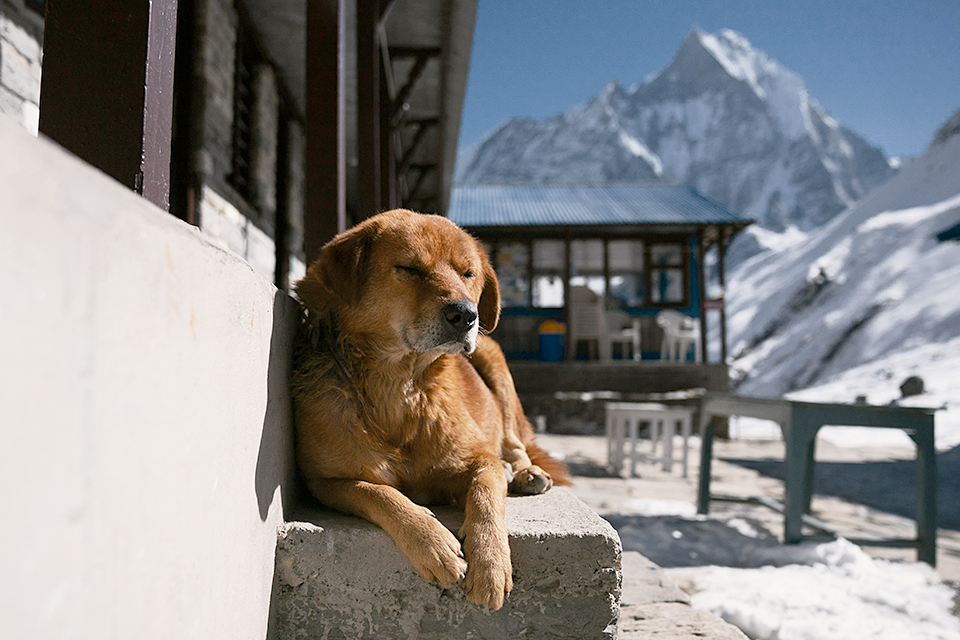
Humans can suffer from altitude sickness. This happens as the body experiences difficulty adjusting to high altitude pressure and lower oxygen levels. But just like their owners, pets can also suffer from altitude sickness. Animals experience many of the same symptoms in high altitudes as humans do, and if they are untreated, the consequences can be severe.
Though traveling to mountainous areas or one of the great national parks can be enjoyable for both you and your pet, it’s essential to put safety first. If your pet isn’t used to high altitudes, it’s important to know the causes, symptoms, treatment for when your pet does get altitude sickness.
At higher elevations, barometric pressure decreases, which means there is less concentration of oxygen molecules in the surrounding air. This decrease in oxygen levels causes both humans and animals the need to compensate for less oxygen each time they breathe. This results in accelerated breathing and heart rate until the body has sufficient time to adjust to the altitude.
While adjusting to higher elevations and less oxygen, pets may develop symptoms of altitude sickness.
Symptoms of altitude sickness in your pet can range from mild behavioral changes to severe illness, at which point veterinary care is necessary.
Pet Travel Center (pettravelcenter.com)
Initially, your pet may display few physical symptoms of altitude sickness. Instead, they may show signs of discomfort through changes in their behavior. This could include reduced energy levels, suppressed appetite, and an overall sense of malaise. Since your pet is unable to tell you directly how they are feeling, it’s essential to notice how they communicate through behavioral changes and physical symptoms.
Among the physical symptoms that your pet may be suffering from altitude sickness are:
If your pet’s symptoms advance, their altitude sickness can result in fluid building up in their lungs and brain. This is potentially deadly, especially if combined with any physical exertion.
If your pet is senior or has any pre-existing cardiac or respiratory conditions, subjecting them to higher elevations puts them at higher risk of developing altitude sickness.
Pet Travel Center (pettravelcenter.com)
If your pet shows symptoms that they are being affected by altitude sickness, it’s best to stop any activity. If possible, slowly move to lower elevations. You should offer plenty of water for your pet to drink and switch from dry kibble to wet food to avoid dehydration.
Pet owners should note all symptoms and contact their personal or local veterinarian to assess whether medical treatment is necessary. In the meantime, keep your pet as calm and comfortable as possible. If your pet’s energy level and symptoms don’t improve with time, take them to the vet for a full examination.

Preventing altitude sickness in your pet will help preserve their health and comfort. It will also give pet owners peace of mind when experiencing higher elevations. As with any travel, the best course of action is to consult with your veterinarian to assess your pet’s condition and receive proper medical advice.
Be cautious if you must travel or move with your pet to an area with high elevations. Follow these simple rules:
Since dehydration is a typical result of altitude sickness, pet owners should have access to fresh water at all times and provide it frequently. And do have ready access to your personal veterinarian’s contact information as well as any local emergency vet services.
It is likely that after some adjustment time, your pet’s blood will adapt to higher elevation and the lower concentration of oxygen. Until the pet has adjusted, however, pet owners must ensure that they do everything possible to prevent altitude sickness in their pets. Pet owners must know and recognize the symptoms of altitude sickness and underst and how to treat it to reduce the risk of any severe or long-term consequences due to altitude sickness in your pet.
Beau Kelton - 22 Sep 2020, 01:38
Thanx, great article. Was wondering if my doggy can feel altitude sickness when we're hiking the rockies.